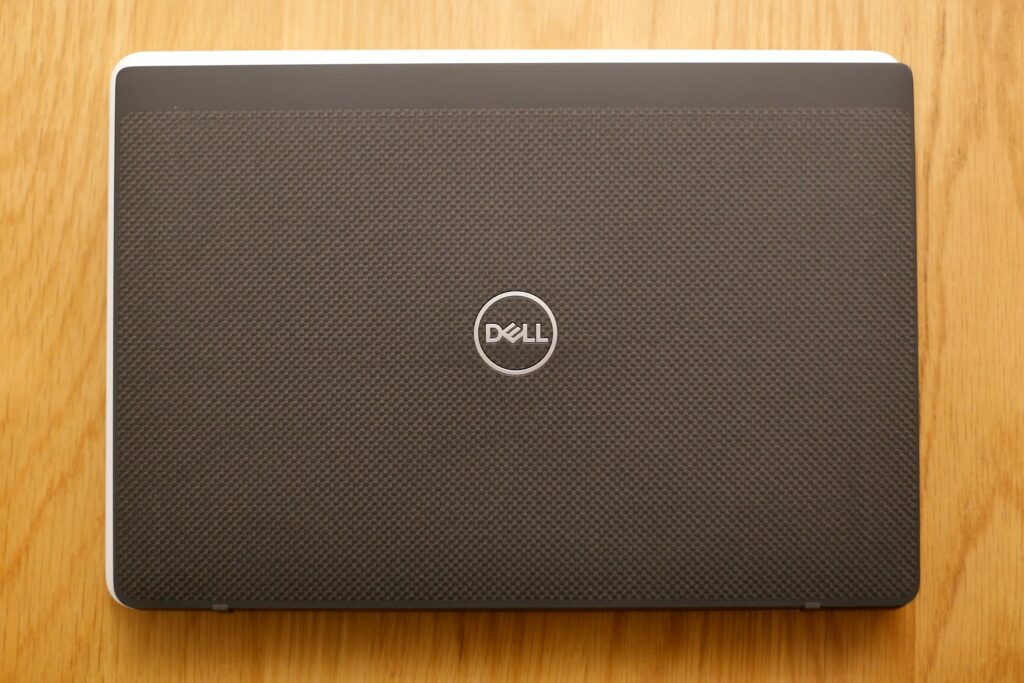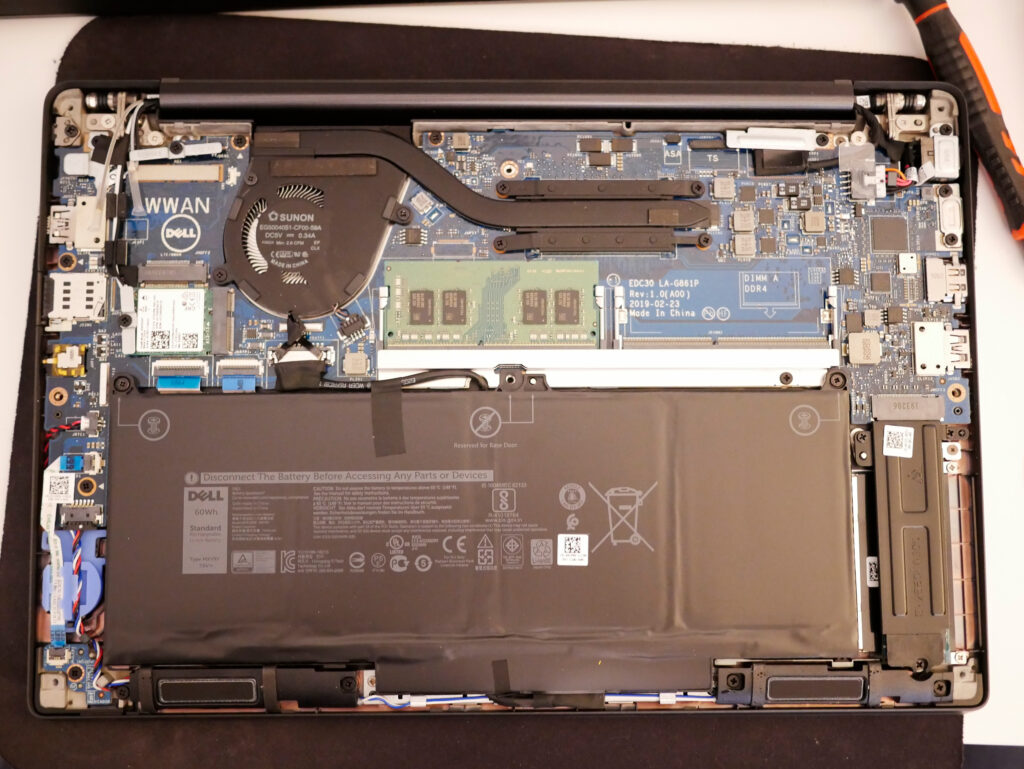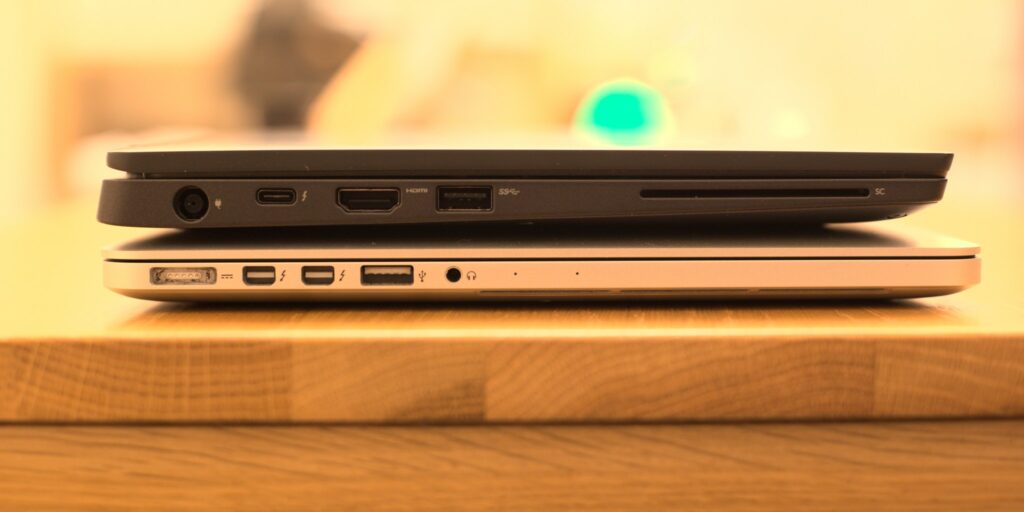
The last time I upgraded my laptop, I went from a Dell Latitude E4300, to a late-2013 13″ Macbook Pro. That was six years ago!
I didn’t expect to get anywhere near 6 years from the mac, as it’s not exactly upgradeable (you can replace the SSD, but that’s it). Modern macbooks are even worse – even the SSDs are soldered. Thus, you’d better anticipate your needs over the lifetime of the machine, because once you click buy, that’s the specification it will have for life.
The Latitude E4300 I had before it lasted 5 years, which was also very good. Back then, laptop technology was improving noticeably with each generation, but it’s fair to say that Intel’s dominance and complacency in the x86 CPU market resulted in marginal gains between generations. You could skip 3 generations and barely notice a performance increase.
Fortunately things have now changed. AMD’s release of its Ryzen processors a couple of years ago gave Intel a much-needed kick, and now we suddenly have 4 and 6-core designs in 15W power envelopes. The improvements over Sandy Bridge and Haswell are now substantial and easily warrant an upgrade.
Thus, the Macbook is starting to feel slow. It’s specs are:
- Core i5 4288U 2.6ghz (dual-core)
- 8GB ram
- 512GB SSD
8GB of ram is what I’d consider the bare minimum – acceptable for browsing but not really software development or content creation. The 512GB SSD is still serviceable, but at ~700MB/s read and write, it is rather slow compared to modern NVME drives which can top 3,000MB/s in ideal conditions. But the performance of the 28W dual-core i5 is probably what’s driving this upgrade the most.
So in late-2019 I started shopping for a new portable laptop to replace the macbook. My requirements are:
- 13-inch form-factor
- At least 4-cores
- At least 16GB ram
- At least 512GB of SSD storage (pref 1TB)
To cut a long story short, this time around I have gone back to the future and bought a Dell Latitude instead of another Mac.
The Mac Option
I really did want another mac.
Last time around, I paid £1275 for the top non-custom model; I.E. the top-spec default configuration without any upgrades. You can still find deals on standard configurations today (including from the eBay seller I used last time, baffztronics), but the problem is the specifications. Only the top model has a 512GB SSD (the rest have a paltry 256GB), and it still has only 8GB of ram. It costs £1,999. These are acceptable specifications today, but will not be for the next 5 or 6 years.
As all the standard configurations are below my requirements, my only option for a Mac is a customised model direct from Apple. The cost?

Ouch. That’s a fair whack on top of what I paid in 2014.
Is it justified?
The Bank of England’s inflation calculator pegs £1275 at £1438 today. Doubling the ram and SSD storage seems like a reasonable equivalent after 6 years, so why the extra cost? Honestly I’m not sure.
Adding to all this is the fact that the current 13-inch design is not long for this world. We’ll soon have a new model, probably with a better, more reliable keyboard, a smaller touch bar, and physical escape key. I never use the touchbar on my work mac, so these are all benefits.
Non-Apple options
The PC ultrabook designs are much more compelling than they were in 2014. The design and manufacturing lead that Apple enjoyed with the retina models has largely gone, and Lenovo, HP and Dell all have genuinely excellent high-end designs which equal the mac in form, function and arguably style.
So for me it’s no longer a question of hardware as it was in 2014. The main problem with going for a manufacturer other than Apple, is having to move away from macOS.
Windows or Linux
Back in 2014, Windows was simply not competitive for non-Microsoft software development, but things have moved on and it’s now down to personal preference. Even if you’re developing for Linux servers, Windows 10 includes the Windows Subsystem for Linux (WSFL), which allows you to run a full Linux distribution (such as Ubuntu or SUSE) without virtualisation. Containerisation also brings benefits here, as you can develop for the container environment and build it wherever you can run Docker (which supports macOS, Windows and obviously Linux).
So while my preference is still Linux, it’s not the slam-dunk that it used to be.
The contenders
With the OS out of the way, here are the new PC models I looked at:
- Dell XPS 13
- Good deals on 16GB/512GB models to be had if you’re happy to wait for one to pop up; expect to pay around £1,300, or less for last-year’s model
- Excellent Linux compatibility
- Get the 1080p screen for best battery life (and to avoid high-DPI scaling issues on Linux in particular)
- SSD upgradeable, RAM soldered
- Dell XPS 13 2-in-1
- Pricey (comparable to a Mac), but fantastic form-factor and design
- Not upgradeable (RAM and SSD both soldered)
- 16:10 display matches the mac’s
- Lenovo X1 Carbon
- Slightly larger than the Dell (14″)
- Generally more expensive in the UK – the models that meet my requirements start at around £1,700
- SSD upgradeable, RAM soldered
The XPS 13 is pretty hard to argue with. It’s a long-standing model that has been regularly updated, and has always received excellent reviews. And it can be had at a reasonable price. In the end though, I decided that dropping more than £1,000 on a PC laptop was a bit too much of a risk to take, when I didn’t know if I’d be happy with the switch from macOS, so I decided to buy a second-hand XPS or X1, with specs equivalent to my current macbook, to try it out.
Second-hand ultrabooks on eBay
It’s hard to go past eBay for a second-hand laptop (full disclosure – I own some shares in eBay). There’s a huge range, and it tends to be the outlet of choice for ex-corporate machines which are replaced on a regular cadence – more regularly than most consumers would replace theirs.
My laptop of choice though, an XPS 13, tends to be priced highly on eBay, I suspect because it is a consumer model. X1s on the other hand are commonly used as corporate machines, so the second-hand channel is full of 3+ years-old models. Haswell X1s, roughly the age of my Mac, are dirt-cheap, having been replaced long ago – the sweet spot currently is probably a 4th or 5th generation X1 with a 5th or 6th generation Core CPU. Look for models with Thunderbolt, and a 1920×1080 IPS screen (the earlier 1600×900 models often had poor-quality displays). Expect to pay around £300-400.
But beating the X1 for value on the second-hand market is the Dell Latitudes. I suspect, again, due to the sheer volume sold for use as corporate machines, and lack of a name they have with consumers.
I’ve waxed lyrical about the virtues of corporate-class machines in the past, but generally they are highly serviceable (with manuals provided for free online and spare parts are readily available), and upgrade-able, which is in stark contrast to high-end consumer models. You pay for this with a little bit of extra thickness and weight, but these days the penalty is not high, and the current Latitudes bear a striking resemblance to the XPS models.
Thus, if you have some technical ability, corporate machines make a lot of sense.
In the end, I ended up buying a practically new (but apparently lightly-used) Latitude 7300, for £499. Originally I wrote more here about buying Latitudes on eBay, but the section became a bit long and it felt like a tangent, so if you’re interested, check out the resulting article, which will be posted after this one.
The Latitude 7300
Despite intending to purchase a cheaper machine as an experiment, I ended up raising the stakes a little, as I thought this was a very good deal.
I settled on a “Grade A” Latitude 7300, with an i5 8265U, 8GB ram, and a 256GB SSD at £499.95, from eBay seller pixeldirect. The list price of this machine is £1700, although no-one pays that; it’s currently available online for £1,109. It’s still a substantial saving though.
On arrival, it lived up to the Grade A rating. The machine was spotless, the power adapter still had the protective plastic on, and it appeared practically new. The warranty lasts until October 2022, but is unfortunately not transferable.
I’ve had it for a few weeks now, and have been slowly transitioning from the Mac. Below are some brief, subjective comparisons between the two.
Performance
A different league. Everything from web browsing to photo editing feels much faster on the Latitude, whether in Windows or Linux. There’s no comparing 2-cores from 2013 with 4 from 2018, even if the mac did have a higher power envelope (28W vs 15).
Display
The 16:9 display feels a little cramped compared to the 16:10 display of the Mac, and is definitely a step down. It’s a shame the Mac isn’t upgradeable, because the old retina display is still brilliant.
Keyboard/touchpad
The touchpad sucks. It’s really really bad. Unlike earlier models, there’s no touchpoint, so you’d better be good with keyboard shortcuts. Any mac user coming to a PC would think so though; I’ve still never seen a PC touchpad that is anywhere near as good as a mac’s.
The keyboard is fortunately really good. It’s nicer to type on than the old Mac, and is probably one of the best I’ve used on a laptop. Keyboards tend to be a personal thing – I like a firm tactical key with lots of travel, so I use a mechanical desktop keyboard whenever possible. But I’m perfectly happy with this one when on the go.
Design
It’s a little smaller in width and length, and quite a bit thicker. The width and length are fine, and on the thickness, the Macbook is noticeably thinner, but this is a trade-off I’m happy to make for battery life and upgradeability.
Ports
Overall an improvement, and much more flexible than a new mac.
Swapping the full-sized SD card slot for a micro-SD slot is a little annoying. It basically means I’ll have to carry around an SD card reader, or at least a USB-C dongle that contains one, which is not ideal. This is a common trend though, and modern macs lack an SD-card reader of any kind.
Thunderbolt 3 and USB-C is nice to have, especially since I can now charge off any USB-PD adaptor – I already carry one on holiday so that’s one less power adapter to pack. The Thunderbolt 2 ports were a bit useless to me – I only ever used them for display-port.
Other niceties
The Dell Bios is pretty powerful and has a lot of nice features.
One of my favourites allows you to limit the maximum charge level. As batteries wear most at the extremes of their capacity (fully charged and fully discharged), you can make them last a lot longer by plugging them in well before you get to empty, and only charging them up to 80%. This way, when using it plugged in at home, it stops charging at 80% (it reports fully-charged to the OS), and I’m not wearing the battery unnecessarily.
Upgrades
This was the first time popping the hood, and while it’s a little more difficult to open than the old E4300, it’s still simple enough. You just need a plastic spudger to gently prise open the base without damaging the plastic.

As you can see above, one ram slot was free, so I found a new stick of ram on eBay for £30 (identical to the existing one), and upgraded it. As a bonus, this will allow it to run in dual-channel mode, which improves memory performance.
4-cores, 16GB ram, 256GB SSD, total cost £530 so far.
The 256GB SSD isn’t large enough for me, but would be useful as an external USB drive, so I ordered a USB case which supports NVME M.2 drives on Amazon for £30. There was a bit of research involved in this – the RTL9210 chipset is less common, but is the newest USB-to-NVME chip on the market, and supposedly the most reliable, according to the anecdotes in this Anandtech thread.
For the upgraded SSD, I settled on a 2TB AData XPG SX8200 Pro for £240. This is on the pricey side, but all the performant 1TB SSDs all seem to be around the £140 mark, so an extra 1TB for £100 felt like the right choice. I could have gone cheaper here, but the existing Toshiba drive is actually pretty decent, and I didn’t want anything slower.
Conclusion
4-cores, 16GB ram, 2TB SSD, total cost £770. That’s a third of the cost of the mac, and with 1TB more storage.
Of course with the mac you get macOS, a much better touchpad, a superior 16:10 display, and a slimmer profile. I don’t think those things are worth paying 3x more money for however, especially when you add lighter weight and serviceability into the mix.
That said, my girlfriend has bet a fiver that I’ll have bought a new Mac by the end of 2021. Will I cave? It’s hard to say, but it will be hard to resist if the new models are compelling. The success of this project probably depends on how successful my transition back to Linux is – Lightroom in particular is going to be difficult to replace.



Dell Latitude E-series for life!! I’ve owned a E4300 for some years now, still working (for some light tasks like emails, stream series and movies, internet browsing) :D What a beast
But since the Latitude hardware is completly obsolete for medium-hard tasks, with no hardware upgrades possible, i’ve turned to Lenovo Thinkpad Tx series. Another beast, but with many components socketed and so utterly upgradable!
I’ve used Macbooks before also, but never felt they justified the prices demanded. (For someone as myself who likes to tinker with it’s machines, Macs offer many dificulties and obstacles to this)
Nowadays, i’m a Latitude & Thinkpad die hard fan. I wish you the best with your new Latitude!
Thanks Sara!
Why would the Latitude hardware be completely obsolete for medium-hard tasks? Does she mean photoshopping, video editing and gaming?
I would have assumed it should be fine with PS, light video editing and maybe struggle with gaming. Am I mistaken?
*She must have meant the E4300 series she had and not the model you’d bought?!
> *She must have meant the E4300 series she had and not the model you’d bought?!
Yes, that is how I interpreted it